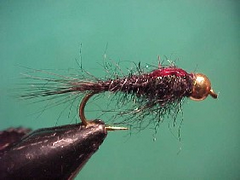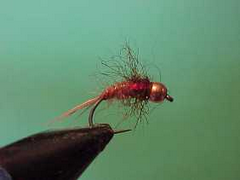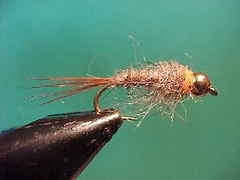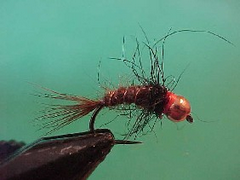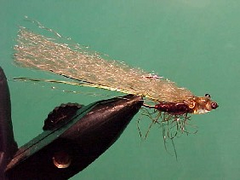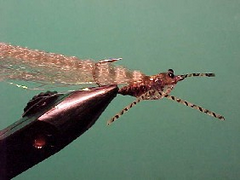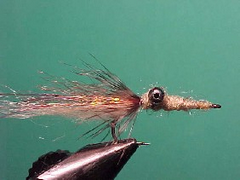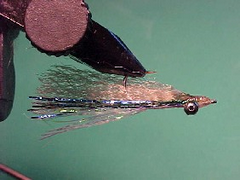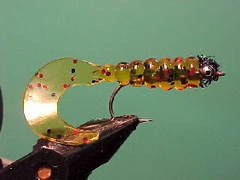TBH flash back nymph
Flash back nymphs have been around for a long time but they still work. In my view the only trick associated with this fly is to select an appropriate flash material for the flash back. I favour several strands of sparkle flash or similar material rather than a single strand of flat Lurex or tinsel. I tie black, brown and olive versions in a couple of sizes..

